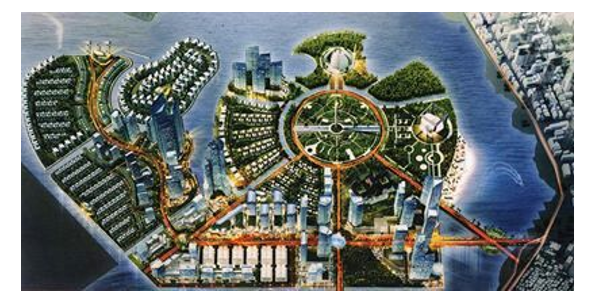Multiplier Effect of the Education and Economy in Center Point of Indonesia Area
DOI:
https://doi.org/10.51574/ijrer.v4i1.2376Keywords:
Center Point of Indonesia, Economic Education, Economic Impact, Multiplier EffectAbstract
Infrastructure development was one of the key components in the success of a nation's overall and educational growth, including the tourism sector. This study focuses on analyzing the economic and educational impact of developing the Center Point of Indonesia (CPI) area in Makassar City, South Sulawesi, which has become a prominent tourism destination. A mixed-methods approach with a concurrent triangulation design was employed to measure the direct, indirect, and induced economic and educational impacts of tourism activities within the CPI area. The findings indicated that the development of CPI had a significant economic impact on the surrounding community, including increased business revenues, job creation, and a reduction in poverty levels. Apart from that, the development of CPI as a multifunctional area is impacting education, especially community economic education. The Multiplier Effect analysis, using the Keynesian Income Multiplier method, revealed that every 1 rupiah of tourist expenditure generated a direct economic impact of 19,81 rupiah on the local economy. The Type I Income Multiplier Ratio of 1,062 reflected an increase in the incomes of business owners and workers, while the Type II Income Multiplier Ratio of 1,092 demonstrated its influence on local household consumption. This indicates that the impact of multifunctional infrastructure development has an impact on the economic education of society.
References
Chenault, S., Martin, J., & Matusiak, R. E. (2016). The ripple effect: Empathy statements of participants of an impact of crime on victims class. Corrections, 1(3), 196-214.
Chidakel, A., Child, B., & Muyengwa, S. (2021). Evaluating the economics of park-tourism from the ground-up: Leakage, multiplier effects, and the enabling environment at South Luangwa National Park, Zambia. Ecological Economics, 182, 106960.
Dupor, B., & Guerrero, R. (2017). Local and aggregate fiscal policy multipliers. Journal of Monetary Economics, 92, 16-30.
Ferreira, V., Fabregat-Aibar, L., Pie, L., & Terceno, A. (2022). Research trends and hotspots in bioeconomy impact analysis: a study of economic, social and environmental impacts. Environmental Impact Assessment Review, 96, 106842.
Grafström, A., & Schelin, L. (2014). How to select representative samples. Scandinavian Journal of Statistics, 41(2), 277-290.
Hai, D. T., Toan, N. Q., & Van Tam, N. (2022). Critical success factors for implementing PPP infrastructure projects in developing countries: the case of Vietnam. Innovative Infrastructure Solutions, 7(1), 89.
Hennink, M., & Kaiser, B. N. (2022). Sample sizes for saturation in qualitative research: A systematic review of empirical tests. Social science & medicine, 292, 114523.
Hidayat, B. A., Supartoyo, Y. H., Setiawan, S., Ragimun, R., & Salim, Z. (2024). Government infrastructure investment stimulation through booming natural resources: Evidence from a lower-middle-income country. Plos one, 19(5), e0301710.
Lukoseviciute, G., Pereira, L. N., & Panagopoulos, T. (2022). The economic impact of recreational trails: A systematic literature review. Journal of Ecotourism, 21(4), 366-393.
Mappatoba, I., Rahmani, F. N., Abdillah, A., & Khotsing, T. (2023). Land Reclamation in Makassar City, Indonesia: the case of Center Point of Indonesia (CPI) reclamation. Government & Resilience, 1(1), 23-39.
Maulana, F., Muhiddin, A. H., Lanuru, M., Samad, W., & Ukkas, M. (2023). Distribution Of Bottom Sediment Before And After Reclamation At Center Point Of Indonesia (Cpi) Makassar City. Jurnal Ilmu Kelautan SPERMONDE, 10-19.
Murphy, C., Marcus-Quinn, A., & Hourigan, T. (2021). Exploring the ripple effect of ‘always on’digital work culture in secondary education settings. In Handbook for Online Learning Contexts: Digital, Mobile and Open: Policy and Practice (pp. 339-353). Cham: Springer International Publishing.
Nasruddin, N. A., Amiluddin, A., Tahang, H., Arief, A. A., & Amri, A. (2023). Potential and Characteristics of Visitors to Lego-Lego South Sulawesi Tourism Objects in the Center Point of Indonesia (CPI) Makassar City. PONGGAWA: Journal of Fisheries Socio-Economic, 103-115.
Putra, A. P., Wijayanti, T., & Prasetyo, J. S. (2019). Analisis Dampak Berganda (Multiplier Effect) Objek Wisata Pantai Watu Dodol Banyuwangi. Journal of tourism and creativity, 1(2).
Prus, P., & Sikora, M. (2021). The impact of transport infrastructure on the sustainable development of the region—Case study. Agriculture, 11(4), 279.
Surya, B., Hadijah, H., Suriani, S., Baharuddin, B., Fitriyah, A. T., Menne, F., & Rasyidi, E. S. (2020). Spatial transformation of a new city in 2006–2020: perspectives on the spatial dynamics, environmental quality degradation, and socio—economic sustainability of local communities in Makassar City, Indonesia. Land, 9(9), 324.
Yulianti, D. (2020). Dampak Pengembangan Pariwisata Terhadap Kesejahteraan Masyarakat (Studi Kasus Pada Masyarakat Pelaku Usaha di Sekitar Objek Wisata Pantai Tanjung Setia, Pekon Tanjung Setia Kec. Pesisir Selatan Kab. Pesisir Barat) (Doctoral dissertation, IAIN Metro).

Downloads
Published
How to Cite
Issue
Section
License
Copyright (c) 2024 Uhud Darmawan Natsir, Nurul Fadilah Aswar, Dwi Anugerah Lestari

This work is licensed under a Creative Commons Attribution-ShareAlike 4.0 International License.













1.png)













